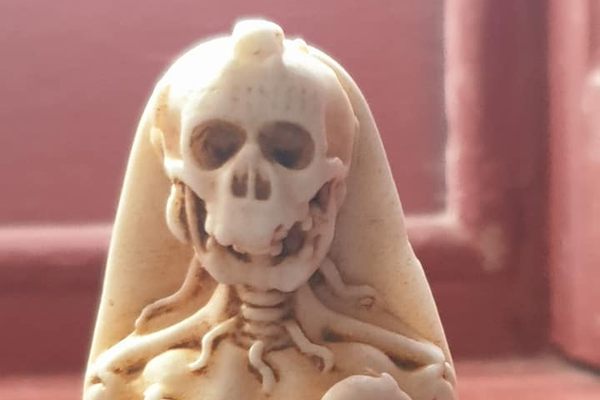About
"This Grave / contains all that was Mortal / of a / Young English Poet / Who / on his Death Bed, in the Bitterness of his Heart / at the Malicious Power of his Enemies / Desired / these Words to be / engraven on his Tomb Stone: / Here lies One / Whose Name was writ in Water. 24 February 1821"
-Epitaph on Keats' gravestone
The house at Piazza di Spagna 26 was the last home of John Keats, and now hosts the Keats-Shelley Memorial House. The museum and memorial is dedicated to the famed poet as well as to his contemporary, Percy Bysshe Shelley. Keats met his tragic and early end when he was taken from this earth by tuberculosis at the tender age of 25.
Keats died in this house on February 23, 1821, and the room that contained his death bed has been preserved as a shrine to the tortured writer. While all of the furniture and wallpaper was removed and burned to cleanse the room of remnants of his illness, it has been re-created to resemble the very room in which the young man was bled and starved by his worried physicians, and begged to die when his caregivers, fearing suicide, refusing him pain relief through opium or laudanum. The house was bought in 1906 by interested parties connected with the Keats-Shelley Memorial Association, and dedicated in 1909 after a facelift. Except for a two-year period during WWII when artifacts were removed and hidden from the Nazis for safekeeping, the museum has been going strong ever since.
The museum hosts a variety of memorabilia from both poets, John Keats because of his obvious connection to the house, and P.B. Shelley because of his relationship with the city of Rome. Its extensive collection from the Romantic era poets includes a library with over 8,000 examples of Romantic literature and a small cinema room showing an introductory film. The house is a national historic landmark and sits at the base of the world-famous landmark The Spanish Steps.
Ghost hunters, always keen on a good tragic story and anxious to find signs of the afterlife, have homed in on the house, insisting it hosts the ghost of Mr. Keats himself. According to legend, the voice of the doomed poet can still be heard inside the house along with other strange noises in the night and mysterious phenomena such as unexplained lights and cold spots.
Related Tags
Flavors of Italy: Roman Carbonara, Florentine Steak & Venetian Cocktails
Savor local cuisine across Rome, Florence & Venice.
Book NowPublished
February 19, 2013


































